Did you know that over 30% of UK homeowners end up regretting their first smart doorbells purchase, mostly because they forgot to consider vital features like cloud storage and night vision? In today’s fast-moving world, a simple doorbell just doesn’t cut it anymore—yet, choosing the wrong smart video doorbell can cost hundreds and leave your home’s security wide open. Don’t fall into the same trap! This guide reveals everything UK shoppers and property owners need to know so you can make a truly smart choice and keep your castle (or business) safe and sound.
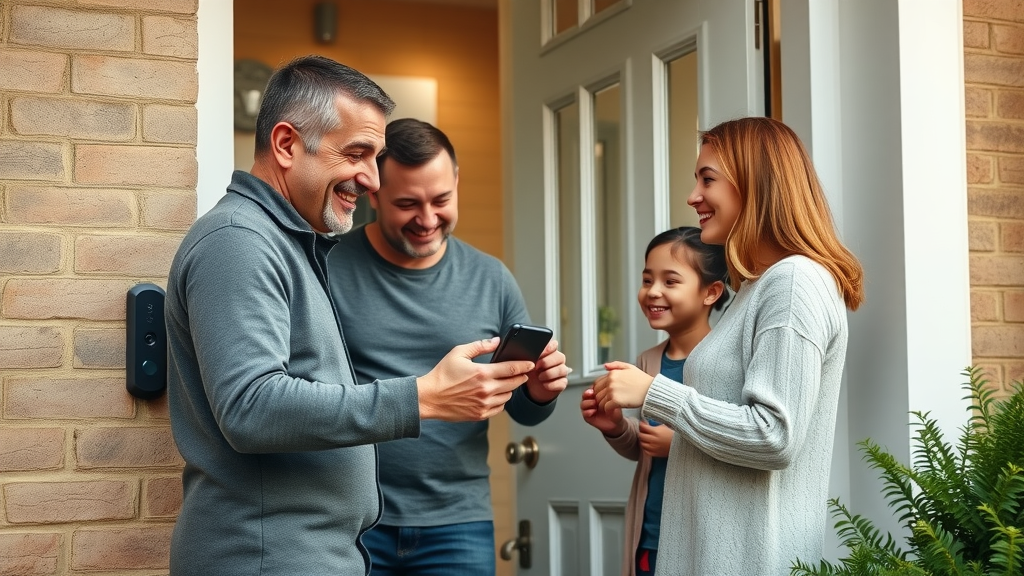
Shocking Facts About Smart Doorbells You Need to Know
‘Over 30% of UK homeowners regret their first smart doorbell purchase due to overlooked features like cloud storage and night vision.’
You’ve likely seen neighbours raving about their new doorbell camera or smart video doorbell—but did you know most first-time buyers in the UK overlook essentials, only to regret it when footage disappears or crucial alerts are missed? Smart doorbells are much more than trendy tech; they provide the link between convenience and home security. Forget to check for key features like motion detection or subscribe to the wrong cloud storage plan, and you could find yourself locked out from crucial video evidence of missed deliveries—or worse, break-ins.
With security cameras and video doorbells now mainstream, buyers expect seamless integration with their smart home setup. However, not all models offer the best value; some cut corners on night vision, while others hide monthly fees in the fine print. These costly mistakes can undermine safety and inflate ongoing expenses. By learning what to look for, you can avoid hidden costs and get real peace of mind from your front door to the back garden.
What You'll Learn About Smart Doorbells, Video Doorbells, and Doorbell Cameras
- The most critical features to look for in smart doorbells, including night vision, motion detection, and cloud storage
- Differences between smart video doorbells and traditional doorbell cameras
- Comparison of the best video doorbells and their costs
- Smart home integration tips
- How to avoid common buying mistakes
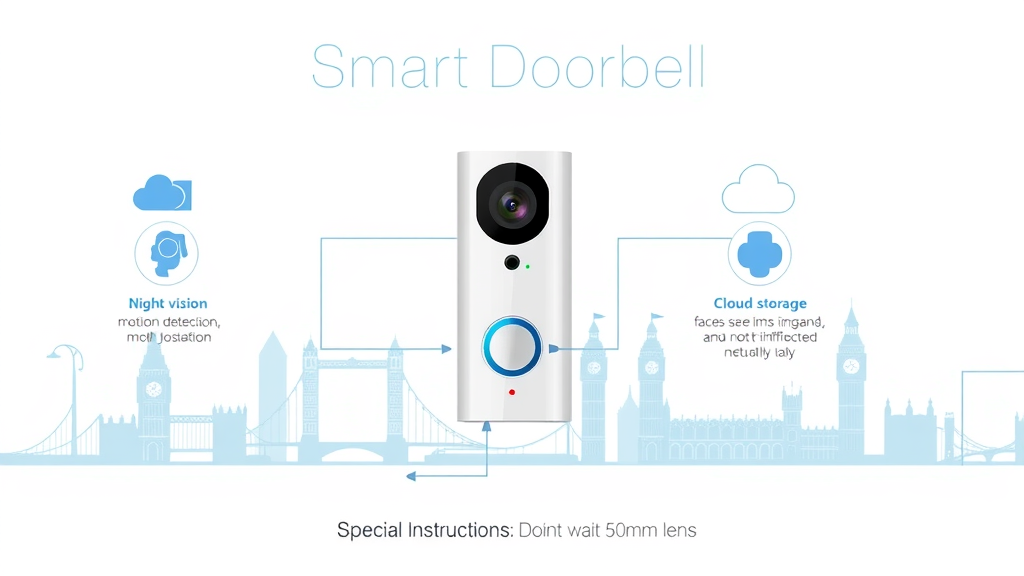
Understanding Smart Doorbells: Features, Advantages, and Smart Home Integration
A smart doorbell isn’t just a new way to greet visitors—it’s your home’s first line of defence. Unlike traditional doorbells, smart video models offer advanced features such as two-way audio, HD video, night vision, cloud storage, and real-time mobile alerts. These devices transform the front door experience, letting you answer parcels from the sofa, check security footage from your phone, or simply know when your kids arrive home. Even business property owners are now opting for smart doorbells as an easy step-up in office security.
Whether you’re integrating with a smart speaker like Amazon Alexa or Google Home, or connecting the doorbell camera to other security cameras in your home, the potential for convenience and safety is huge—as long as you choose wisely. The most successful setups consider the differences in cloud vs. local storage, motion detection accuracy, and ongoing costs. So, before you buy, make sure you understand how these features add up for your unique needs.
What Sets Smart Doorbells Apart?
- Video door and bell camera functions
- Integrated security camera and smart video tech
- Two-way audio, night vision, and motion detection capabilities
The main difference between a smart video doorbell and a basic doorbell camera lies in their functionality and security. Smart video doorbells deliver instant alerts to your smartphone, often with live HD video feeds and two-way audio, so you can speak directly with the delivery driver or a visitor at your front door. Features like night vision allow for 24/7 monitoring, while motion detection spots movement and records clips even when you’re not home. These functions boost your home security and give your family added peace of mind, especially during dark winter evenings common in the UK.
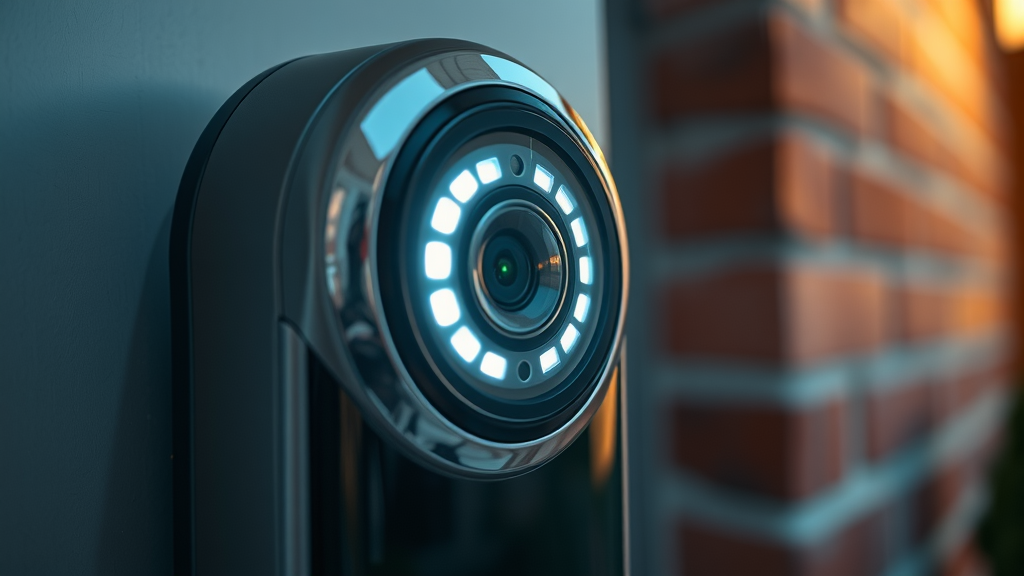
Smart Home Compatibility: Alexa, Google Home, and Beyond
One of the biggest draws for modern smart video doorbells is their ability to integrate into your smart home. Many leading options offer voice assistant compatibility, so you can ask your Amazon Alexa or Google Home to show live footage or review recent events. This can be a game-changer when paired with other smart devices—think of seeing who’s ringing your front door on your smart TV or having the kitchen smart speaker announce an arrival.
Proper integration isn’t just about novelty. It extends to connecting your security cameras, alarm systems, and even smart lights, giving you a unified home security platform. Before choosing your next smart doorbell, always check whether it’s truly compatible with your preferred smart home ecosystem and supports features like app notifications, automation, and remote access.
The Value of Cloud Storage, SD Card, and Local Storage
Choosing between cloud storage, SD card, or other forms of local storage is one of the most important decisions buyers make. Cloud storage offers peace of mind by automatically saving footage offsite (even if your camera is damaged), but usually carries monthly fees. SD card and local storage options can save on subscription costs, but put the responsibility for data safety and backup on you. If you’re looking at high-value properties or a business, investing in robust, tamper-proof cloud options is often the best route.
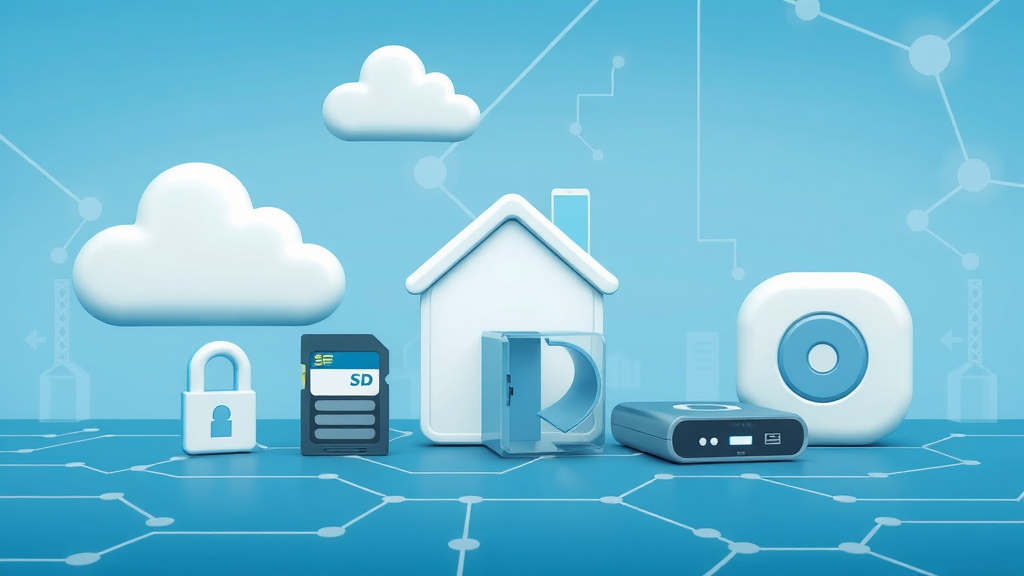
The Costly Mistake: Ignoring Smart Doorbell Camera Essentials
The number one mistake UK buyers make is choosing a smart doorbell camera and ignoring critical functions like night vision, reliable motion detection, and storage transparency. Picking up a “bargain” doorbell with poor night vi (night vision) may mean your front door is protected only in daylight. Likewise, failing to read the fine print on cloud storage or SD card requirements can lead to gaps in your security coverage or surprise subscription costs.
Whether you’re looking at popular brands like Ring Video Doorbell, Eufy, or Google Nest, you need to match your device to your lifestyle—do you need event history, instant playback, or easy smartphone access? Ignoring these elements can put your property, deliveries, and loved ones at unnecessary risk.
Why Night Vision and Motion Detection Are Non-Negotiable
- Day and night visibility explained (night vi, night vision)
- Smart security needs for front door and home security
UK weather and long winter nights mean a video doorbell with excellent night vision is not just a nice-to-have—it’s essential. With infrared night vision, you can clearly see who’s at your door even in total darkness, enabling you to check on late-night arrivals or potential threats. Combined with smart motion detection, your doorbell camera sends you real-time alerts whenever there’s unusual activity, keeping you one step ahead of intruders, delivery drivers, or simply when the kids return late from school run.
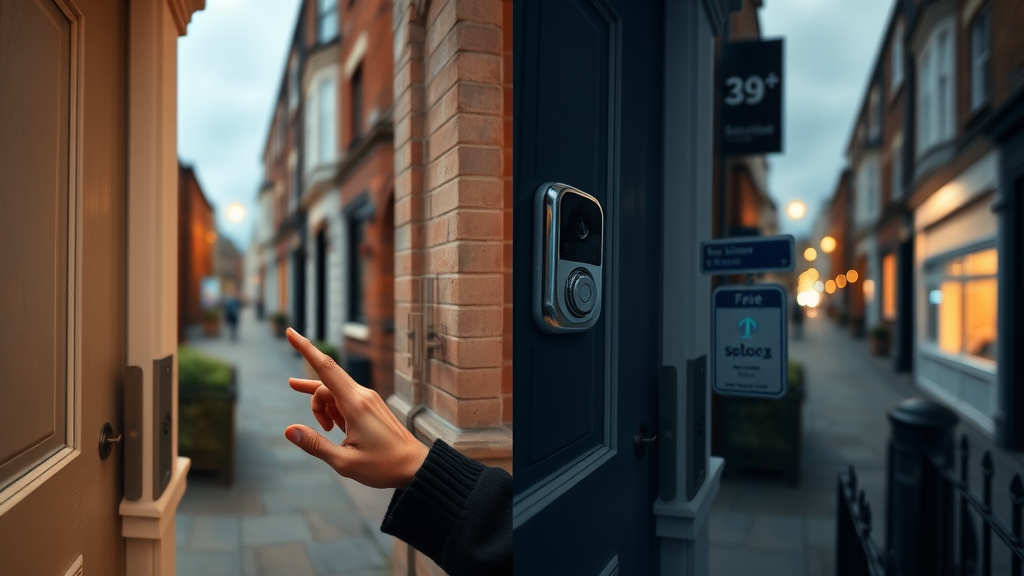
Cloud Storage vs. Local SD Card: Protecting Your Footage
Footage is only useful if you can access it when you need to. Cloud storage saves clips to the internet, making them available from anywhere and usually safer—but at a monthly cost. SD card or local storage keeps your video on the device or a physical card, without ongoing fees, but puts video at risk if devices are stolen or damaged.
| Feature | Cloud Storage | SD Card/Local Storage |
|---|---|---|
| Accessibility | Anywhere via app/internet | On device only, needs extraction |
| Security | Data safe from theft/damage | Can be lost if device is stolen |
| Ongoing Cost | Monthly/annual subscription | No ongoing fees |
| Storage Limit | Set by subscription tier (often 30 days) | Physical card capacity (e.g., 32GB SD card) |
| Best For | Security-focused homeowners, businesses | Cost-conscious buyers, renters |
Side-by-Side Comparison: Best Video Doorbells and Bell Cameras in the UK
With so many choices, it’s vital to compare best video doorbell options directly. Top brands like Ring Video Doorbell, Eufy, and Google Nest lead the market, but models vary in field of view, motion det, and integration. The right pick depends on whether you need battery doorbell flexibility, advanced cloud stor, or a budget-friendly bell camera with local storage. Always compare smart home compatibility to make sure your investment fits your broader ecosystem.
Ring Video Doorbell, Eufy, Google Nest, and More
| Model | Key Features | Typical Price (GBP) | Smart Home Compatibility |
|---|---|---|---|
| Ring Video Doorbell (3/Pro) | HD Video, night vision, motion detection, cloud storage | £89-£219 | Amazon Alexa, some Google Home |
| Eufy Video Doorbell | Local storage (no fees), high video quality, human detection, night vision | £119-£179 | Amazon Alexa, Google Home |
| Google Nest Doorbell | 24/7 recording (via subscription), facial recognition, motion detection | £129-£229 | Google Home/Nest, some Alexa |
| Arlo Essential Doorbell | 180-degree field of view, video quality, cloud storage | £120-£180 | Amazon Alexa, Google Home, Samsung SmartThings |
Smart Video Doorbells for Business Property Owners
- Coverage area for wide front doors and entrances
- Multi-user support
- Integration with wider security cameras
For business premises, smart video doorbells need a broader field of view and more robust access management. Multi-user notification support allows several staff members to get alerts or check visitor footage, while integration with other security cameras or a unified office dashboard streamlines overall building security. When choosing for an office, look for doorbell camera models that support multiple accounts, cloud backup, and reliable wired or PoE installations for uninterrupted power and connectivity.

How to Choose the Best Smart Doorbell for Your Home
Not sure where to start? To find the best smart video doorbell for your home, consider your property type, Wi-Fi strength, need for battery doorbell setup, and how much you value smart home integration. Video quality, reliability, night vision, and clear two-way audio should all rank high, especially if you want to future-proof your home se investment and get the best value for your budget.
Key Factors: Video Quality, Night Vision, Audio, Storage, Price
- Assessing video and audio quality (best video, best video doorbell)
- Comparing storage options: cloud, SD card, local storage
- Evaluating motion detection and night vision
- Checking smart home and voice assistant support
- Considering battery doorbell vs. wired
When weighing up choices, don’t overlook field of view (wide-angle lenses can capture more of your front garden or driveway) and smart app features. A higher initial investment often means longer lifespan and lower long-term costs—especially if you skip the ongoing cloud subscription with a microsd card-based model.

Top Recommendations for Every Budget and Property Type
Best Video Doorbell for Apartments
Apartment dwellers benefit from wireless, battery doorbell options that require minimal drilling and offer strong app-based alerts. Eufy or Ring Video Doorbell 3 are standouts for renters, balancing video quality with sound privacy features and easy self-install.

Best Smart Video Doorbell for Detached Homes
For larger or detached homes, the Ring Video Doorbell Pro or Google Nest offers high-definition video, reliable hardwired setups, and the best peace of mind for families. These options often come with advanced features like person detection, stronger night vision, and broader smart home compatibility.
Best Doorbell Camera for Business Offices
Offices should look at commercial-grade doorbell cameras with support for multiple users and full integration into existing security camera systems. Arlo, Eufy, and selected Ring models offer exceptional options for business entrances.
Smart Doorbells Installation: Tips for Front Doors and Smart Homes
The right installation is key for smart video doorbell performance. Poor positioning or skipping the Wi-Fi check can mean missed footage, false alerts, or frustrating dead zones around the front door. Always check local regulations if renting, and consider weatherproof covers for UK conditions.
Professional Install vs. DIY: What to Know
Many modern smart doorbells, especially battery doorbell models, are straightforward for DIY installation, coming with all essential tools and clear instructions. Still, a professional install ensures optimal positioning, strong Wi-Fi connections, and safe power supply—crucial for hardwired systems or multi-camera home security setups.
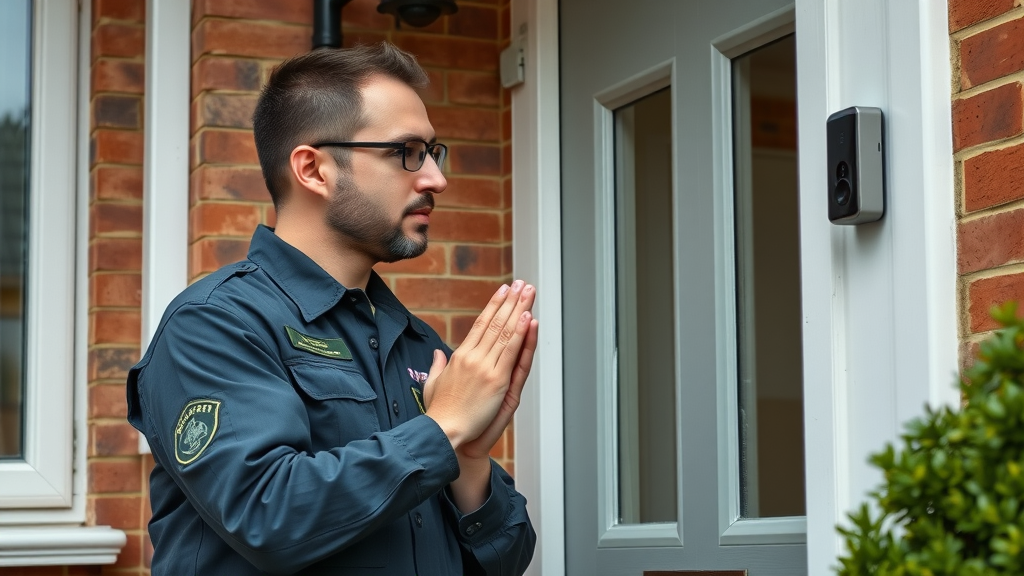
Common Smart Video Doorbell Installation Pitfalls
- Incorrect positioning for video doorbell
- Forgetting to connect to smart speaker or home se systems
- Overlooking cloud/SD card setup
To avoid headaches, always double-check your Wi-Fi signal strength, test your camera’s field of view before drilling, and immediately set up your storage solution—whether cloud storage or microsd card. Don’t forget to connect your device to your preferred smart speaker or voice assistant during initial setup!
Integrating Your Smart Doorbell with Your Security Camera System
Connecting your new smart doorbell to existing security cameras creates a seamless perimeter monitoring setup. Most brands offer easy app-based integration with network video recorders, alarm hubs, or other wireless cameras, letting you watch multiple angles of your property from one app.
Connecting With Existing Home Security Cameras
For best results, stick within one ecosystem for all your home security gear—mixing and matching can lead to compatibility headaches or lost recordings. Options like Ring, Arlo, and Google Nest are leaders in unified smart home security systems, offering simple management, single app control, and better long-term reliability.
Maximizing Smart Home Automation with Voice Assistant (Amazon Alexa, Google Assistant)
Voice assistants unlock even more convenience, letting you answer the door, turn on lights, or review delivery footage hands-free. Set up your Amazon Alexa, Google Assistant, or similar smart speaker as part of your installation checklist for instant access to alerts and seamless voice-activated control.

Watch our handy video demonstration showing smart doorbells handling typical UK situations: a delivery driver interaction, night vision footage, visitor communication through the app, and instant mobile alerts.
People Also Ask About Smart Doorbells
Which is the best smart doorbell?
Exploring the top-rated smart doorbell choices for UK homes
The best smart doorbell depends on your preferences, but in the UK, Ring Video Doorbell Pro, Eufy Video Doorbell, and Google Nest lead the pack for reliability, video quality, and integration. Eufy stands out for its lack of subscription fees and strong local storage, while Ring offers unmatched compatibility with Amazon Alexa and third-party devices for a true smart home setup.
What are the disadvantages of a smart doorbell?
The downsides: privacy, connectivity, and ongoing costs
Smart doorbells can have privacy concerns (especially if not set up with proper security or if cloud storage is breached), require strong Wi-Fi for smooth streaming, and often have hidden ongoing fees for premium features or cloud storage. It’s important to read the small print, regularly update your firmware, and choose a trusted brand to stay protected.
Is there a smart doorbell without monthly fees?
Best picks for doorbell cameras without ongoing costs
Yes—brands like Eufy and some Arlo and Ezviz models provide local or SD card storage, meaning you own your recordings outright and skip the monthly fees. These best video doorbell picks are perfect for those who want reliable footage preservation but don’t want ongoing subscriptions.
Can you get a doorbell that rings on your phone?
How app alerts and smartphone integration work with smart doorbells
Absolutely—all leading smart doorbells let you receive instant alerts, answer calls, and view live footage from your phone. The device sends push notifications when someone rings or when motion is detected, bringing your front door right to your pocket wherever you are.
FAQs on Smart Doorbells, Video Doorbells, and Security Cameras
-
Can I install a smart video doorbell if I rent?
Most battery doorbell options are perfect for renters, as they don’t require drilling and are easy to uninstall when you move out. Wired installations may need landlord permission. -
How weatherproof are smart doorbells?
Leading brands are designed to withstand UK rain, frost, and heat. Just ensure you pick a model with a minimum of IP65-rating for best protection. -
Will my Wi-Fi bandwidth handle multiple smart video devices?
Generally, yes, as long as your broadband is at least 10 Mbps per 2–3 cameras. For more devices, consider a mesh Wi-Fi upgrade. -
Are video doorbells secure against hacking?
Choose doorbells with regular firmware updates, two-factor authentication, and strong password protection for the highest level of home security.
Learn to install your smart video doorbell in minutes with our detailed setup tutorial—covering everything from box to first ring, including app configuration, Wi-Fi setup, and smart home integration.
Smart Doorbells: Key Takeaways for UK Shoppers
- Avoid ignoring night vision, cloud storage, or compatibility
- Check ongoing subscription fees for video doorbells
- Smart home integration can boost your property security
Conclusion: Make a Smart Choice with Your New Doorbell
‘The right smart doorbell is an investment in your home’s peace of mind—don’t leave it to chance.’
Choose wisely, compare thoroughly, and let your smart doorbell work as hard as you do.
We'd love to see your comments on this?
Have you made the switch to a smart video doorbell or learned something new from this guide? Share your experience or ask your questions in the comments below!
When selecting a smart doorbell, it’s crucial to consider features like cloud storage, night vision, and motion detection to ensure comprehensive home security. The Ring Video Doorbell offers HD video, night vision, motion detection, and integrates seamlessly with Amazon Alexa, providing real-time alerts and two-way communication. (en.wikipedia.org) Alternatively, the Google Nest Doorbell provides 24/7 recording (with a subscription), facial recognition, and motion detection, making it a strong choice for those invested in the Google Home ecosystem. (en.wikipedia.org) By carefully evaluating these options, you can select a smart doorbell that best fits your security needs and smart home setup.
 Add Row
Add Row  Add
Add 





Write A Comment